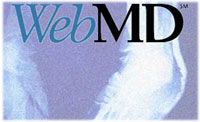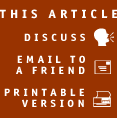 |
|
|
 Can the Internet Be Used to Bridge Inequities in Medical Information
Access? Can the Internet Be Used to Bridge Inequities in Medical Information
Access?Talking with the WebMD Foundation’s George Gellert By Madanmohan Rao madanr@microland.net George Gellert is president of the Atlanta-based WebMD Foundation, which targets health care initiatives in emerging economies. He has worked extensively in the public sector, held public health positions, and traveled to more than 90 countries for health care-related work. Gellert holds degrees in public administration and policy from Harvard University’s Kennedy School of Government, Yale University School of Medicine, and McGill University. Rao: What was the original vision behind the founding of Healtheon/WebMD Corporation and the WebMD Foundation? How do the for-profit and nonprofit arms of WebMD operate together? Gellert: Founded by Jeff Arnold, Healtheon/WebMD Corporation <http://www.webmd.com> originated from a corporate mission to use the power of the Internet to revolutionize health care via improvements in the way physicians, consumers, and health care institutions interact. The WebMD Foundation, its nonprofit wing, originated from a mission to bridge the health information gap, or digital divide in health, directly aiding health professionals in emerging economies. We aim to do this via a public health portal—the Health Information InterNetwork—which leverages the assets of Healtheon/WebMD and its strategic partners. Aggregation, connectivity, and partnerships are the fundamental principles that are helping us fill a critical public health need in countries like India. We are also working with various industry and public-sector partners to increase health Internet access throughout the developing world by providing technology in the form of computers and Internet access. What are some ways the Net can be harnessed by medical sectors? The Net can improve global public health through the creation of knowledge equity. It can serve as the conduit for diffusing greatly needed public health information and technology. International public health experts are in general agreement that preventive health information and communication tools are important parts of the solution. Many diseases exist for which information and education offer a powerful vehicle for prevention. The InterNetwork will offer the health care and medical sectors access to a single umbrella Web site where authoritative, high-quality public health information will be available. It will include educational content, scientific databases, indigenous medical information, and statistical tracking and analysis tools. How has the foundation grown since inception? We have staff based in Atlanta and Washington. Jeff Arnold, CEO of Healtheon/WebMD, has provided $25 million toward the Health InterNetwork initiative. Additional fund-raising is currently under way toward a goal of $150 million over a five-year budget. We have formed major alliances with the United Nations system, including the World Health Organization. What targets and expectations are you setting for the InterNetwork? How does India fit into these plans? We are projecting to have a minimum of 100 public health sites in each of the 130 least developed nations operational by 2003. India is the first of six to eight pilot countries where we are launching the InterNetwork. We intend to roll out a pilot in India by the end of the year. India’s strength lies in its advanced IT [information technology] industry capability and resources. India’s weakness lies in its imminent need for increasing health connectivity at an exponential rate across a huge income and poverty divide. We will be building InterNetwork sites at the local level first and building out from there. Clearly, there is a need to build out from 100 sites to achieve saturation in nations with large populations such as India. With the IT industry exploding in India, governmental, industry, and public reception of our health initiative has been very high. Ongoing discussions are progressing with several NGOs [nongovernmental organizations], multilateral agencies, and organizations from the public and private sectors. The WebMD Foundation will take a Minnesota-Mississippi approach to the India pilot: identifying two states within India with two very different economies. The city of Kanpur in Uttar Pradesh and the city of Hyderabad in Andhra Pradesh will be our targets. Targeting these two very diverse regions will be an important way to conduct proof of concept for the InterNetwork. What is your revenue model? The InterNetwork is currently structured as a noncommercial undertaking built from philanthropic donations from the international public sector and industry. Eventually, it will need to be absorbed into and supported by national and state governments of the countries in which it exists. Will your sites be addressing indigenous, non-Western medicinal/lifestyle practices as well? Yes, the public health portal will include valuable content such as advances in medicine from both non-Western and Western practices. Content will be drawn from leading public health institutions as well as end users who will coauthor content to and from the developing world. In addition, the data capture channel will identify interesting and potentially high-impact indigenous practices of clinical or public health promise and bring them to the attention of leading international research institutions. What are the legal challenges facing this domain, and how will you address them? We are assessing both the cultural and legal requirements for providing health connectivity in each country we are targeting. Obviously, we will have to pay close attention to this issue so that InterNetwork sites are well received and appropriately managed. Any other parting words of advice for medical professionals using the Net for health care? Use the Net as a vehicle for continually renewing and updating the state of public health and medical practice in your country. Use it as a source for improving patient care and empowering the knowledge equity of health professionals and consumers. There is much work to be done to address health disparities and balance the scale of health information inequity. There is a critical need out there for an initiative of this kind on such a global scale. But we are making great progress and making health inroads at Internet speed, which would not have been possible without the advent of the Internet. We need to attend to the creation of a local, a regional, and ultimately, a national community of public health professionals online and to managing those communities dynamically. |

